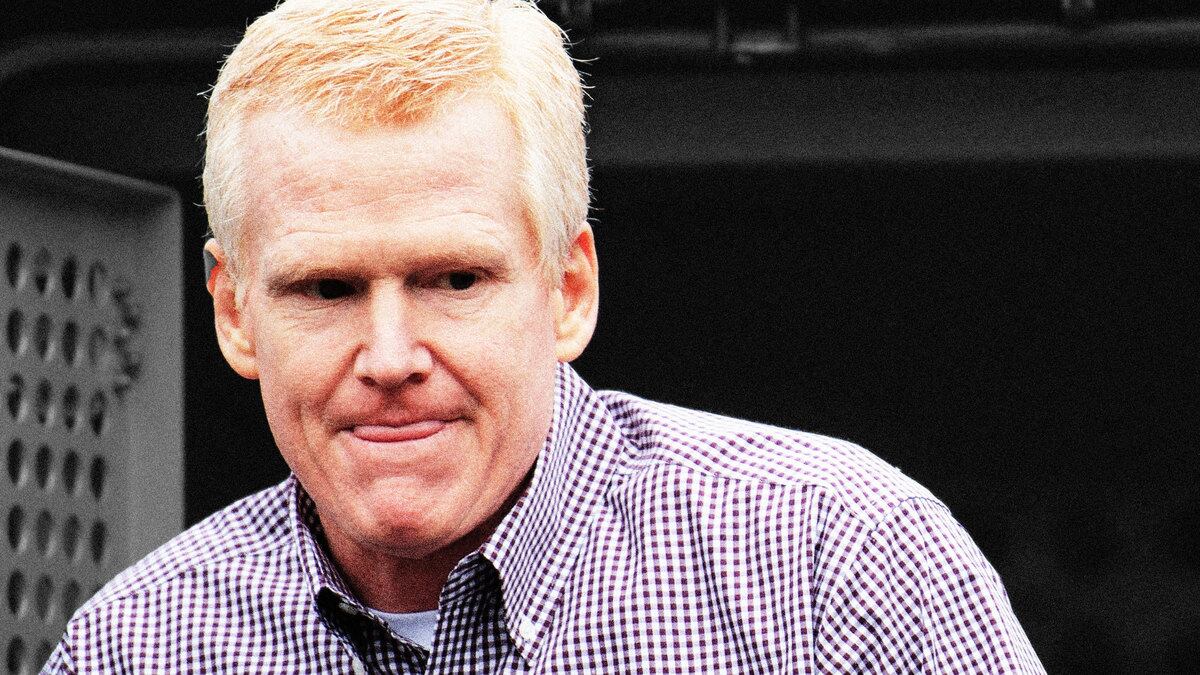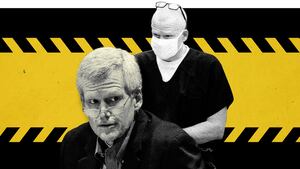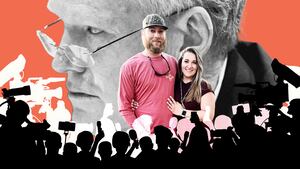Over the last week, jurors have been inundated with details about how Paul and Maggie Murdaugh were brutally murdered outside their South Carolina estate in June 2021—and allegations about who did it.
Prosecutors say that Alex Murdaugh, a former lawyer from a prominent local family, fatally shot his 52-year-old wife and 22-year-old son in an attempt to distract from the looming threat of his financial problems being exposed, and then took deliberate steps to cover up his role in the grisly crime. To prove their case, they called over a dozen witnesses to detail the crime scene, cell phone data, and Murdaugh’s initial interviews with law enforcement. Murdaugh, they argue, is the only person who could have killed his family.
But prosecutors have yet to fully explain to the 12-person Colleton County Court jury the nature of Murdaugh’s alleged financial crimes—or disprove the defense's claim that he was nowhere near the crime scene during the murders. Further, prosecutors have yet to explain how Murdaugh would have successfully shot his wife and son with two different guns in a matter of seconds before going to visit his ailing mother and calling several family members and friends around the same time.
“Motive isn’t an element of the crime, but jurors are going to want to know why Murdaugh would kill his wife and son, especially when there is no evidence that their relationship was strained,” former federal prosecutor Neama Rahmani told The Daily Beast. “The state wants jurors to believe that Murdaugh wanted sympathy and to draw attention away from his many financial crimes, but that seems like a stretch.”
The uphill battle to convince the jury without reasonable doubt that Murdaugh committed the slayings, however, got a little easier on Wednesday. Experts tell The Daily Beast that two witnesses may have poked holes in the defense’s case, providing jurors with credible testimony into the dynamics of the powerful legal family, and opening the door for prosecutors to reveal more about Murdaugh’s money problems.
Those witnesses were two of Paul Murdaugh’s close friends, Rogan Gibson and Will Loving.
“Paul’s friends were star witnesses for the prosecution,” Jill Huntley Taylor, an expert trial consultant who is not connected to the case, told The Daily Beast on Thursday. “They have credibility because they admit to caring about the whole family, including Alex. They were huge for the prosecution [because it] allowed them to challenge Alex’s alibi and credibility, allowed intro of motive and potential cover-up.”
Both Gibson and Loving, who testified they were close with the family, confirmed to jurors they heard Murdaugh in the background of a video Paul took at the dog kennels about five minutes before he was murdered at 8:50 p.m. The confirmation shattered Murdaugh’s claims that he was asleep in the house at the time of the murders and did not go down near the crime scene until over an hour later.
When asked whether they were sure Murdaugh was heard in the background of the video, along with Maggie and Paul, both friends immediately answered: “100 percent.”
“They have credibility because they admit to caring about the whole family, including Alex,” Taylor added. “They say positive things about Alex’s relationships with Maggie and Paul.”
Murdaugh, 53, is facing two counts of murder and two counts of possession of a weapon during the commission of a violent crime in connection with the June 7, 2021, double homicide. His defense has stressed that Murdaugh had no real motive to murder his “wonderful” family and has slammed prosecutors for not having any concrete evidence tying their client to the case deemed the “trial of the century” in the Palmetto state.
And before Wednesday, both Rahmani and Taylor agreed that the defense may have had the jury on their side. Prosecutors spent the first week of the trial parading law enforcement officers who first responded to the murder scene at the dog kennels of the Murdaugh family estate and experts in cell phone data who detailed the last messages and calls on Maggie and Paul’s devices.
Jurors also watched several police interviews Murdaugh had following the murders, where he states multiple times that he had fallen asleep at the house while his son and wife were down at the kennels. Murdaugh also told investigators that he left the house around 9 p.m. to check on his mother, before returning less than an hour later.
When he realized nobody was at the house, Murdaugh told investigators in early police interviews, he drove down to the dog kennels—where he found his family in pools of blood and immediately called police around 10:07 p.m.
But the video—which Paul took for Gibson to show him his friend’s chocolate labrador and its injured tail—casts doubt on Murdaugh’s story and provides a timeline of Paul and Maggie’s last moments before their death.
“In this highly circumstantial case, every minute matters,” Rahmani said. “The prosecution’s best evidence so far has been the video to prove that Murdaugh was lying when he said he was taking a nap and he was not at the kennel when the murders happened.”
Taylor also noted that jurors “work hard to get it right” and have probably remained captivated by the prosecution’s line of witnesses. The jury expert noted that the 12-person pool probably clocked other key points the prosecution has made, including that Murdaugh deleted his calls to his wife after the murder from his call log and may have confessed to the crime in a controversial police interview.
But she believes that Gibson and Loving were the first two witnesses that provided a window into Murdaugh’s person's life and a controversial interview where Murduagh may have confessed to the crime.
The friends “left no question that Alex was at the kennel at a time Alex says he was not there,” Taylor said. She also noted that during his testimony, Gibson testified that Murdaugh once interrupted a conversation he was having with Paul's grandmother after the murders. During the conversation, Gibson testified that Murdaugh “vehemently object[ed] that he had been at the kennel—a more clear overt lie” that Taylor says provides jurors with insight into the former lawyer's mindset after the crime.
The two also provided prosecutors with the first opportunity to fight for admission of Murdaugh’s financial motivation into the case because both spoke about the 2019 boat crash that prosecutors say threatened to expose his crimes. At the time of the trial, Paul was facing charges after allegedly drunk driving a boat that led to the death of 19-year-old Mallory Beach.
On Thursday, Judge Clifton Newman heard arguments from both sides about the admission of evidence outside the presence of the jury—and also listened to testimony from Murdaugh’s former law partner who claimed she confronted him about missing funds the day of the murders. Newman is expected to rule about whether Jeanne Seckinger, the chief financial officer of Murdaugh’s former law firm, will speak in front of the jury.
“To suggest the murders were meant as a distraction from his financial situation may seem odd to the jury,” Taylor added. “Prosecutors may be better to use the financial issues and improprieties as underlying the motive without being too explicit about the exact motive.”
For Rahmani, the decision to include Gibson and Loving in the prosecution’s initial week of testimony may have been the best move so far to convince jurors that Murdaugh murdered his family.
“The defense has the advantage after opening statements and the first week of witnesses, but these two witnesses may have saved the prosecution’s case,” he added.







